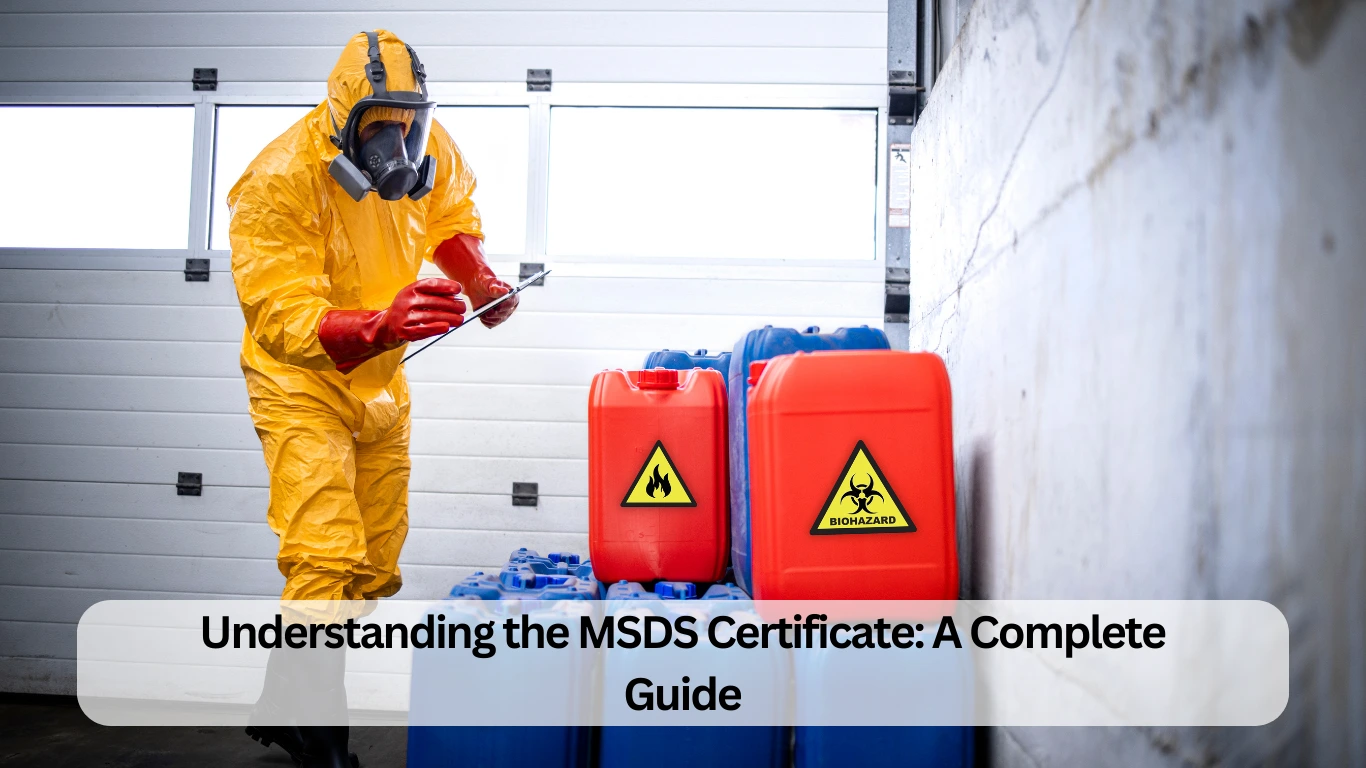The Material Safety Data Sheet (MSDS) Certificate is more than just a piece of paper—it’s a vital tool used across industries to ensure the safe handling and storage of chemicals. Whether you’re a business owner, an employee, or a safety expert, understanding what an MSDS Certificate entails can help keep your workplace safe. In this guide, we’ll walk you through everything you need to know about MSDS Certificates, from their key components to their practical uses.
What Exactly is an MSDS Certificate?
An MSDS Certificate, short for Material Safety Data Sheet, is a document that provides detailed information about a particular chemical substance. It covers everything from the chemical’s properties and potential health risks to safety precautions and emergency procedures. The main goal of an MSDS is to make sure that everyone—from workers to emergency responders—has the information they need to handle or work with a chemical safely.
Breaking Down the Key Components of an MSDS Certificate
- Product Identification: Lists the chemical’s name, common synonyms, and the manufacturer’s contact info.
- Hazard Identification: Details the chemical’s potential health, environmental, and physical hazards.
- Composition and Ingredients: Breaks down the chemical’s components, including any hazardous substances.
- First-Aid Measures: Provides instructions for what to do in case of exposure—whether it’s inhalation, skin contact, or ingestion.
- Fire-Fighting Measures: Explains the chemical’s flammability and appropriate fire-fighting methods.
- Accidental Release Measures: Offers guidelines for safely managing spills or leaks.
- Handling and Storage: Gives advice on how to store and handle the chemical properly.
- Exposure Controls/Personal Protection: Recommends protective gear and exposure limits.
- Physical and Chemical Properties: Lists characteristics like boiling point, vapor pressure, and physical appearance.
- Stability and Reactivity: Explains the chemical’s stability and potential reactions.
- Toxicological Information: Covers the health effects and symptoms of exposure.
- Ecological Information: Describes the chemical’s impact on the environment.
- Disposal Considerations: Advises on the proper ways to dispose of the chemical.
- Transport Information: Provides guidelines for transporting the chemical safely.
- Regulatory Information: Includes compliance details with chemical safety regulations.
Why is the MSDS Certificate So Important?
The MSDS Certificate is more than just a regulatory requirement—it’s a cornerstone of workplace safety. It helps everyone understand the risks linked to particular chemicals, so they can take the right precautions. For example, if a factory worker needs to use a solvent, they can check the MSDS to see if they need protective gloves or what to do if they accidentally get some on their skin.
Real-World Example: Avoiding Accidents
Imagine a cleaning company using a powerful industrial cleaner. Without the MSDS Certificate, workers might not realize they need protective eyewear or that inhaling the fumes could be dangerous. By reading the MSDS, they can take steps like wearing masks and ensuring proper ventilation to avoid health issues or accidents.
How Can You Get an MSDS Certificate?
If you manufacture or distribute chemical products, it’s your responsibility to provide an MSDS Certificate to your customers. You can either create the document yourself or hire a professional service that specializes in preparing MSDS Certificates. Just make sure your MSDS complies with local and international regulations, like OSHA’s Hazard Communication Standard (HCS) or the Globally Harmonized System (GHS).
Practical Tips for Using an MSDS Certificate
- Keep it Accessible: Make sure your MSDS documents are easy to find—either digitally or in print—so employees can access them when needed.
- Regular Training: Hold regular training sessions to teach employees how to read and use MSDS Certificates effectively.
- Update Regularly: Review and update your MSDS Certificates as needed, especially when new information or regulations come up.
Conclusion
Knowing how to read and use an MSDS Certificate isn’t just about ticking a box for compliance—it’s about making your workplace safer. Whether you’re dealing with household cleaners or industrial chemicals, the MSDS is your go-to guide for safe handling. By understanding and utilizing this document, you can better protect yourself and those around you from chemical hazards.

